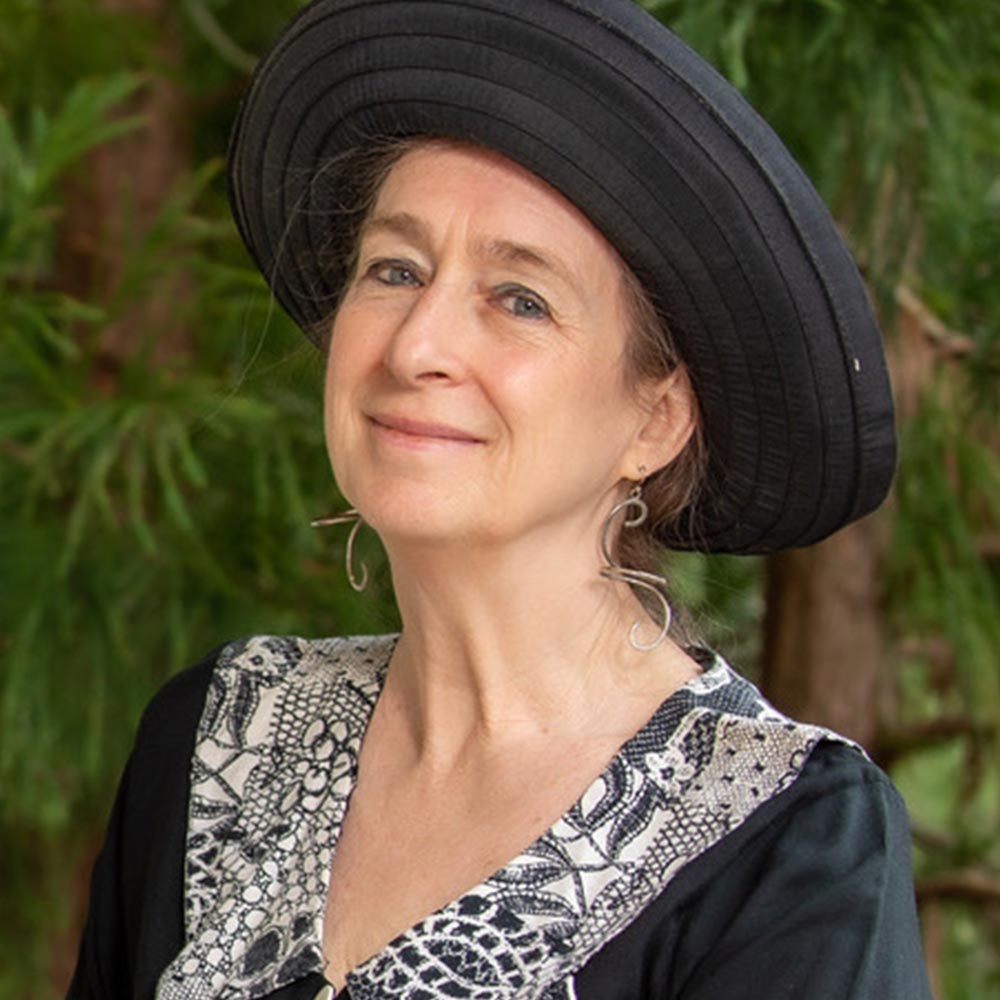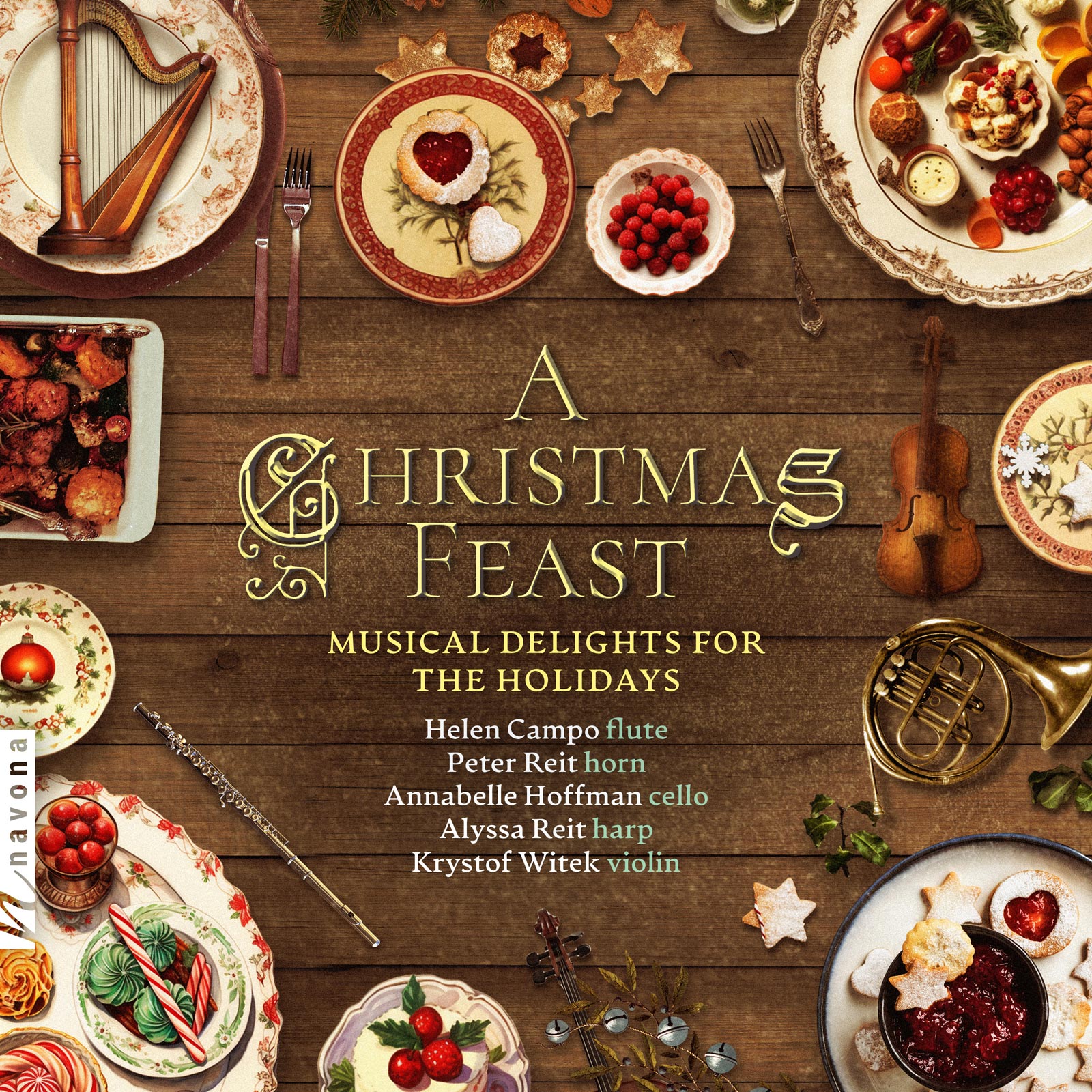
A CHRISTMAS FEAST from Alyssa Reit celebrates the rich tradition of Christmas carols across multiple cultures and centuries. The album features 20 instrumental chamber arrangements of carols performed on harp by Ms. Reit along with violin, flute, French horn, and cello. She includes familiar classics like O Come, O Come Emmanuel and Ding Dong Merrily on High, as well as 17th-century English songs such as Blessed Be That Maid Marie and I Saw Three Ships, the Appalachian carol Star of The East, the 15th-century French Noel Nouvolet, and many more. Aptly named, A CHRISTMAS FEAST serves a bountiful collection of joyful carols from throughout the ages.
Today, Alyssa is our featured artist in “The Inside Story,” a blog series exploring the inner workings and personalities of our composers and performers. Read on to learn how her work has become influenced by great classic myths, sagas, fairy tales, and more…
Tell us about your first performance.
My first performance was as a beginning harp student, as part of a group recital at the Lyon & Healy Salon in Chicago. I played a short piece by Salzedo — but as soon as I started, I realized that my pedals weren’t set correctly. So I stopped, fixed the pedal, and simply restarted — no angst, no self recriminations! Now I think, “if only I could take all my mistakes as simply!”
How have your influences changed as you grow as a musician?
To go into how my influences have changed is a tricky question, largely because the things that have influenced me most are not musical. In my late 30s I realized that I wanted to write settings for the great classic myths, sagas, and fairy tales. The ideas and meanings in those kinds of literature have mostly formed my work since then, and provided the driving force behind my creative output. I let myself be drawn by whatever the story itself needs, so I find a large range of styles to be useful to that end.
What were your first musical experiences?
I am most and extremely grateful for my early musical experience as part of the Chicago Children’s Choir. Although I had been taking harp lessons for several years, the choir was at a whole different level. We did great music — Faure’s Requiem, works by Schubert, took part in performances with the Chicago Lyric Opera and the Chicago Symphony, and toured. That in itself was inspiring. Learning to listen and tune to others by ear was a great education. And the director himself — Chris Moore, at that time — was very strict, and held us to the highest standards, though he was never mean. I thank my lucky stars to have been part of it.
Where and when are you at your most creative?
I don’t know if there is a “most creative” place, other than an internal one. I like to work in the morning, before the business of the day intrudes too much. That being said, some of my best work has been under pressure, and at whatever time of day or place. For example, this album of 20 arrangements was written within one month, as we had a deadline. So I didn’t have time to overthink or get too sidetracked by fussy details.
What’s the greatest performance you’ve ever seen, and what made it special?
Although I have seen countless great performances, the one that comes to mind was one given by a troupe of young women and girls who were presenting dances by Isadora Duncan. My theater company had brought five shows to the Edinburgh Fringe Festival, where we were performing over a span of five weeks — and my husband and I were going out practically every afternoon and evening to see all the other amazing offerings there. Although what we saw was indeed often extraordinary or very entertaining, many of the shows struck me more as “spectacles,” or as impressive tours de force. We went to see the Isadora Duncan show because the daughter of one of my company members was dancing in it, and we had no special expectations. But I was blown away. The combination of the beauty of the dances, and the grace and sincerity of the dancers was overwhelming.
What musical mentor had the greatest impact on your artistic journey? Is there any wisdom they’ve imparted onto you that still resonates today?
I’ve had so many musical mentors it would be hard to pick one. My harp teacher at Juilliard, Marcel Grandjany, was a huge influence, because he taught such a breadth of color and tone. But one of my most profound influences comes from a moment in a recording by Arthur Rubenstein of Mozart’s Piano Concerto #23, which I first heard when I was a student at Juilliard. At the end of the second movement, there is a repeated note that he plays with such depth that it permanently affected my artistic vision.

Alyssa Reit is an independent composer, arranger, performer, teacher, and storyteller. As a harpist, she has performed with institutions ranging from the Orchestra of St. Luke’s, the Pittsburgh Symphony, and the Metropolitan Opera, to contemporary music groups and Irish bands. She has given concerts with John Cage, toured Europe with the legendary Martha Clarke, and traveled the United States playing with the world famous vocal group, Anonymous 4. Her main body of work has been creating theatrical-musical settings of myths, classic stories, and fairy tales; these have been performed at such venues as the Caramoor Center for the Arts, the NYU Steinhardt’s storytelling series, and at the Edinburgh Fringe Festival, to critical acclaim.

